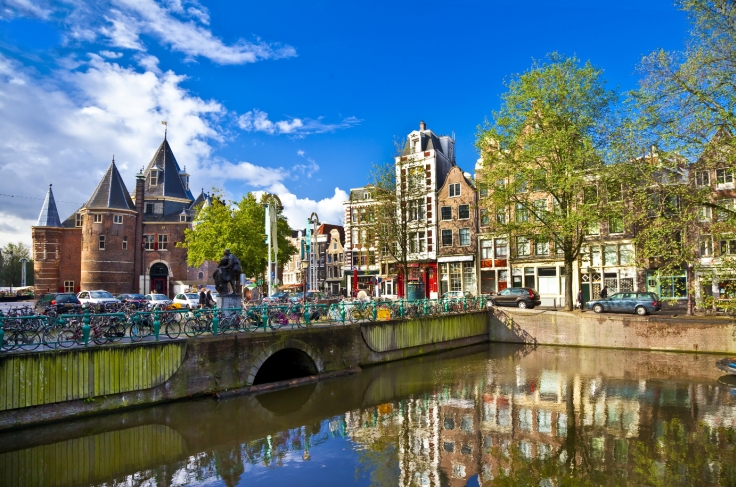Research on future-proof bridges and quays awarded by National Research Agenda
Within the Dutch National Research Agenda (NWA) 'Bridges and Quay Walls in Urban Areas' one of the research projects has been awarded to associate professor Mandy Korff (Deltares / TU Delft Civil Engineering and Geosciences (CEG)).
The research, ‘live insights for bridges and quay walls,’ shortened to ‘LiveQuay,’ provides an integrated assessment of the safety and condition of bridges and quay walls in an interactive decision support platform based on values from all stakeholders. “Our ever-improving probabilistic model based on a combination of monitoring data and physical models will indicate more accurately and more quickly than today whether infrastructure measures are needed,” said Korff, who is working closely with a consortium of researchers, companies and civil society organisations.
Korff’s research is part of a broad NWA call in which the research groups from the Faculty of Architecture and the Built Environment (TU Delft) and the University of Twente have also been awarded grants. Together they have been allocated almost three million euros. The call is the result of a collaboration between the City of Amsterdam and the Dutch Research Council (NWO), with the cooperation of the Ministry of Infrastructure and Water Management.

Development of groundbreaking innovations
The NWA study gives us the opportunity to really make a leap forward; some ground-breaking innovations will be developed, such as combining models and monitoring on a much more extensive scale than we do now. The starting point of the research is that it will be possible to keep existing quays and bridges in safe use for longer periods of time. This requires more meaningful, transparent information. A quay wall or a bridge is often built a long time ago, sometimes more than 100 years ago. And consists of many different parts such as wooden piles, floors and the masonry we see at the waterfront. By combining different techniques, we can make better predictions about how long a quay or bridge can last. Renewing such structures has a major impact on the cities and the inhabitants, the project also takes this impact and the values that the constructions have into account.
Close involvement, chance of faster results
According to Korff, she has brought together a very strong and diverse consortium for her part of the research. “This includes knowledge partners, monitoring parties, engineering firms and representatives of residents and heritage specialists. Because everyone is already involved in the challenge of quays and bridges in one way or another, we expect to be able to build on this quickly. The close involvement of the market parties also maximizes the chance of rapid application of our results.” Read more about the call of the National Research Agenda and the news item of the Dutch Research Council.

